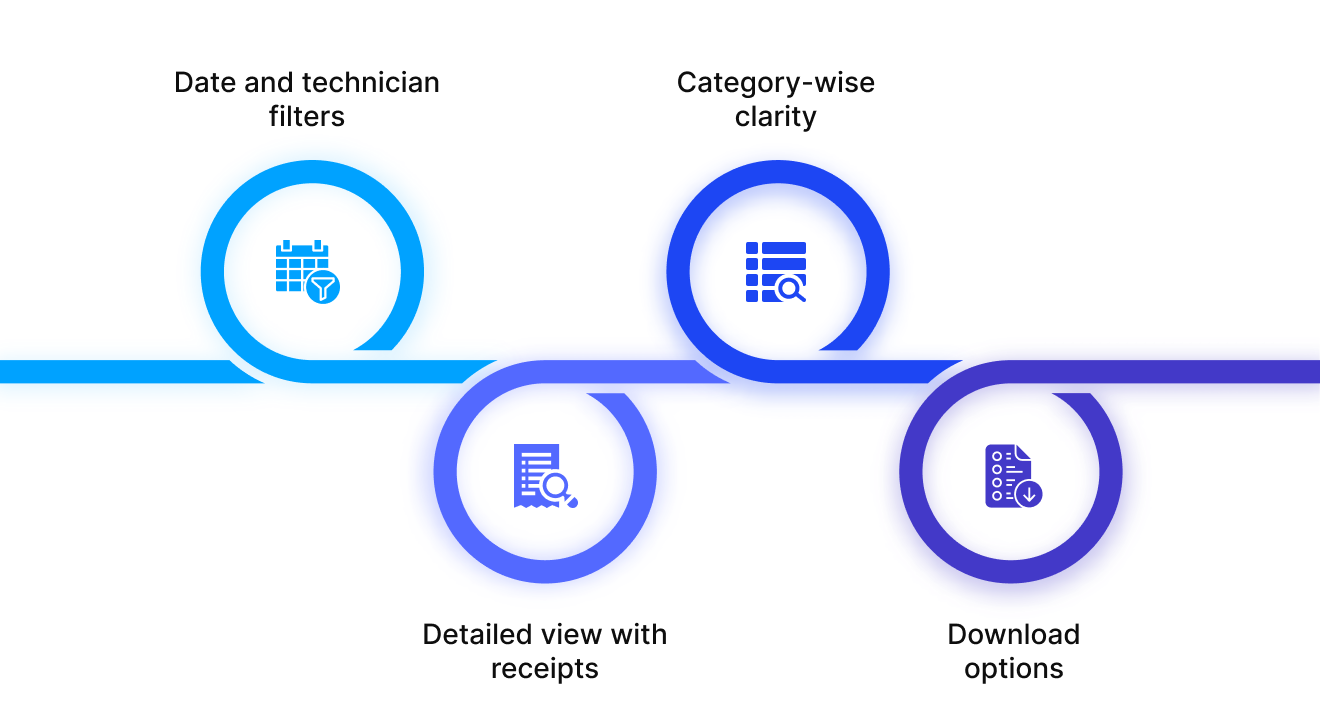How expense reports help streamline technician management

Managing technicians is not just about assigning tasks. It is about keeping field operations clean, accountable, and efficient. One part of this process that often gets overlooked is expense tracking.
Technicians in the field handle more than installations or servicing. They travel between sites, purchase tools, manage quick repairs, and sometimes pay out of pocket. When these expenses are recorded through calls, chats, or scattered notes, it becomes difficult to verify claims or understand spending patterns.
This may seem like a small issue, but over time, it creates confusion, delays, and financial mismatches. Without clear records, it is easy to lose track of what was spent, when, and why.
Modern fleet environments track everything from vehicle movement to fuel usage digitally, so they should also give technician expenses structured visibility. This is where organized expense reports come in. They provide a clear, centralized way to record and review every field expense with confidence.
Why expense tracking matters in technician operations
Field technicians are constantly on the move. They visit multiple client sites, handle urgent service calls, and often make small but essential purchases on the spot. These might include spare parts, fuel, parking charges, or repair tools. If these expenses are not logged properly, they become invisible to the system.
As a result, without structured tracking, several problems start to surface. Claims are delayed, budgets go off track, and claims become harder to validate. In some cases, repeated errors or duplicate claims can go unnoticed for weeks.
Tracking technician expenses is not just about controlling costs. By maintaining transparency between field staff and office teams, this process builds trust and ensures fair treatment of technicians. It also provides managers with a clear view of spending on each job or region.
When expense tracking becomes part of the technician workflow, it improves financial accuracy and keeps the entire operation more accountable.
What a good technician expense report should offer
To truly simplify expense tracking, the reporting system must do more than just log numbers. It should make reviewing, filtering, and exporting data easy for operations teams.
Here are the essentials that make an expense report useful in real-world scenarios:
- Date and technician filters
Managers should be able to filter expenses by time period or technician to focus only on the relevant data. - Category-wise clarity
Every expense should include a defined category. This helps in understanding where most money is being spent—whether on tools, transport, or other needs. - Detailed view with receipts
Each entry should include the date, amount, description, and a downloadable receipt. This ensures transparency and helps with quick verification. - Download options
The entire report should be available for export in common formats like Excel or PDF. This supports internal approvals, financial audits, or client documentation.
A clear, searchable, and downloadable report makes it easier to manage technician reimbursements and maintain a reliable financial trail.
The business benefits of streamlined expense reporting
Organizing and easily tracking technician expenses makes the entire field operation more efficient. It is not just about controlling costs. It is about building a smoother, more transparent workflow.
Key benefits include:
- Faster payments to technicians
Clear entries and downloadable receipts reduce approval delays and manual follow-ups. - Fewer errors and disputes
Verified data with digital records lowers the chances of duplicate claims or missed entries. - Better budget visibility
Managers can track how much is being spent by technician, category, or time period. - Improved technician satisfaction
When field staff know their expenses are being recorded and paid properly, it builds trust and keeps the team around. - Stronger accountability
Every transaction is logged and traceable, reducing financial risks in day-to-day operations.
Conclusion
Technician expenses are part of everyday operations, but they often remain unmanaged. Without proper tracking, small costs can turn into larger problems. An easy-to-use expense report solves this by recording everything in one place.
It assists managers stay in control and allows technicians to feel supported. More importantly, it keeps the entire service process clean, fair, and connected.




